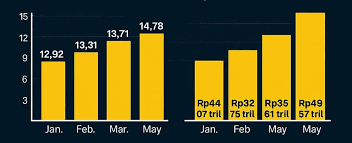🔗 Goldman Sachs and BNY Mellon Embrace the Future: Tokenized Money-Market Funds Are Here. By ChainFabricNews
 |
| Image source: Yahoo Finance |
In a move that blends traditional finance with cutting-edge blockchain technology, Goldman Sachs and BNY Mellon have teamed up to launch a pilot project that tokenizes money-market fund shares. This isn't just another crypto headline—it's a sign that major financial players are getting serious about blockchain’s potential to transform how we invest.
💡 What Is Tokenization, and Why Does It Matter?
Think of tokenization like creating a digital version of something real. In this case, money-market funds—short-term, low-risk investments used by institutions to park cash—are being turned into digital tokens on a secure blockchain. These tokens still represent the same value but can now be transferred instantly, securely, and more efficiently.
Traditionally, investing in these funds involves paperwork, waiting times, and several layers of processing. Tokenization changes that. It promises faster settlements, lower costs, and greater transparency, all while staying secure and compliant with financial regulations.
🚀 Why Goldman and BNY’s Move Is a Big Deal
Goldman Sachs and BNY Mellon are not startups—they’re titans of the global financial system. So, when they start experimenting with blockchain, the world takes notice. Their pilot will allow institutional clients to buy and use tokenized fund shares through BNY’s LiquidityDirect platform, with blockchain tech provided by Goldman.
And it’s not just these two players involved. Asset management giants like BlackRock, Fidelity, and Federated Hermes are also part of the ecosystem, showing just how serious Wall Street is about digital assets.
🧠 How It Works in Simple Terms
Here’s a basic breakdown:
-
You invest in a money-market fund.
-
Instead of getting traditional shares, you receive blockchain-based tokens.
-
These tokens live on a secure digital ledger, enabling real-time transactions and 24/7 access.
-
You can use these tokens as collateral or trade them (within approved networks), just like you would any digital asset.
It’s fast, efficient, and aligned with how younger investors and institutions want to operate in the digital age.
📈 What This Means for the Future
This project isn’t open to everyday investors yet—it’s still in a pilot phase and focused on institutions. But it lays the groundwork for a future where retail investors might also have access to fractional, tokenized financial products, including real estate, bonds, or even art.
Experts predict that the tokenization market could reach $2 trillion by 2028. That means we’re only at the beginning of what could be a financial revolution.
⚖️ Regulation Is Catching Up
One of the reasons this project is happening now is because regulation is finally starting to support it. In July 2025, the U.S. passed the GENIUS Act, which clarified rules around stablecoins and tokenized assets. With legal clarity comes more innovation—and safer opportunities for investors.
📝 Final Thoughts
This isn’t just a tech experiment. It’s a signal that the future of finance is digital, and that even the most traditional institutions are ready to embrace it. Tokenized money-market funds might sound complex, but they’re built on a simple idea: making investing smarter, faster, and more accessible.
As more of the financial world joins the blockchain movement, we can expect major changes in how money moves—changes that will affect banks, investors, and everyday people alike.



Comments
Post a Comment